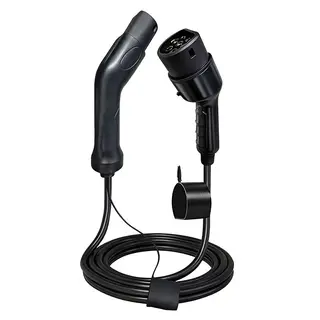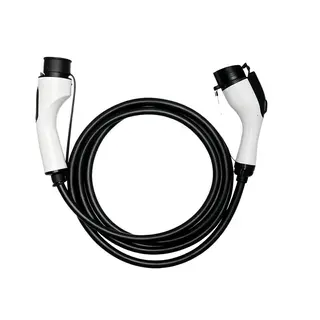With the popularization of electric vehicles, the installation of charging piles has become a focus for vehicle owners and related practitioners. An efficient, safe, and convenient charging pile installation plan can not only improve the charging experience for vehicle owners but also add value to residential projects or commercial premises. This article will focus on the installation of electric vehicle charging piles, providing a detailed introduction to the entire process from planning to implementation, including the selection of installation methods, layout planning, equipment selection, electrical design, and later management, aiming to provide a comprehensive and practical guide for charging pile installation.
The layout planning of charging piles is a key link to ensure the efficient and safe operation of electric vehicle charging facilities. A reasonable layout can not only improve the utilization efficiency of charging piles but also provide a more convenient charging experience for vehicle owners.
For the convenience of equipment installation and charging facility management, charging parking spaces built at one time should be centrally arranged as a charging parking area. The charging parking area should be close to the charging distribution room, and the distance between the charging distribution room and the parking area should not exceed 50 meters. When the service straight-line radius exceeds 200 meters, multiple charging parking areas should be set up to ensure that the service range of the charging facilities can cover the entire parking area. The number of centralized parking spaces in each charging parking area should not exceed 100, and it is advisable to set them near garage entrances and exits for easy fire rescue and vehicle access.
The layout of charging facilities should fully consider user safety and convenient maintenance. First, charging facilities should not be set in low-lying areas prone to water accumulation, nor directly under restrooms, bathrooms, or other areas where water often accumulates, and should not be installed in places with severe vibration or high temperature. These locations may affect the normal operation of charging facilities and even cause safety accidents.
In addition, the layout of charging facilities should not obstruct the driving and parking of electric vehicles. The safety, operation, and maintenance distances between charging facilities, electric vehicles, and buildings should meet relevant requirements. For example, charging facilities should not block drivers' sightlines and should not be placed in pedestrian evacuation corridors or passages. The direction of charging facilities facing vehicles should consider anti-collision measures to prevent vehicle collisions from damaging the equipment.
The installation form and layout position of charging facilities should consider convenient operation between electric vehicles and the facilities and facilitate vehicle parking. Generally, charging facilities should be arranged on the side of a parking space behind structural columns, and after installation should not affect door opening. The installation form is selected according to the width of the structural column surface and the width of the chosen charging pile.
If the charging facility is installed on the side wall of a parking space, the side wall and parking space width should be ≥500 mm, and the facility should be positioned at the front or rear without affecting door opening. If installed on the rear wall of a parking space, the parking space should be arranged close to the wall, with the facility centrally installed. When there are no civil construction components around the parking space, a suspended arrangement at the rear of the parking space may be adopted. The standard column-span installation method should be combined according to the specific parking space conditions.
The installation of charging facilities should meet the following requirements: walls and brackets must meet load-bearing requirements, and the facility should be securely fixed. Charging facilities should be installed vertically, and any deviation from the vertical in any direction should not exceed 5°. The operating area of the equipment human-machine interface should have a horizontal centerline 1.4 m above the ground. Floor-mounted charging facilities in underground garages should have a base larger than the outer dimensions of the facility, and the base height should be 1000 mm above the floor.
In the installation process of electric vehicle charging piles, selecting the appropriate charging equipment and installing it correctly is a crucial step. Charging equipment not only directly affects charging efficiency and user experience but also relates to the safety and reliability of the entire charging system.
The currently common charging equipment mainly includes three types: AC charging piles, DC charging piles, and combined AC/DC charging piles. AC charging piles use a 220V AC power supply, suitable for general households and small charging sites; DC charging piles use a 380V AC power supply, with fast charging speed, suitable for commercial parking lots and other locations requiring fast charging; combined AC/DC charging piles provide both AC and DC charging functions, with a 380V AC power supply, able to meet different user needs.
Charging equipment should have functions such as leakage protection, over/under current, over/under voltage, and over-temperature protection to ensure safety during use. At the same time, the equipment should have an emergency stop function, and the charging gun should have protection during insertion and removal to prevent safety accidents caused by improper operation. Charging equipment installed outdoors should adopt lightning protection measures to cope with harsh weather conditions.
To improve convenience, charging equipment should have automatic cable retraction to prevent damage from improper use. The selected charging equipment should meet national standards, energy industry standards, and State Grid company enterprise standards, satisfying charging needs of different vehicle models. Charging equipment should be compatible with old and new national standard EVs; for special electric vehicles, dedicated charging equipment should be provided, applied for by the owner to the property management and relevant authorities.
During the installation of electric vehicle charging piles, electrical design and management are key steps to ensure safe and efficient operation. Reasonable electrical design can not only meet the power demand of charging piles but also improve system stability and reliability.
For newly built residential parking garages, when designing substation power capacity, the load capacity of electric vehicle charging equipment should be fully considered, reserving low-voltage distribution circuits or space for dedicated transformer and distribution system installation. This is the basic condition to ensure normal operation of charging equipment and a key measure to avoid large-scale renovation due to insufficient power in the future.
The load calculation of electric vehicle charging equipment should be carried out in the design stage based on the number of parking spaces using the unit index method, and the calculation coefficient can be selected with reference to relevant regulations. At the same time, the demand factor method can be adopted according to specific equipment parameters, and the demand factor should meet national and local standards.
The power supply of electric vehicle charging equipment should be supplied via dedicated circuits. The supply circuit should be connected according to local utility requirements, either to the residential public transformer distribution system or a dedicated transformer system. Radial distribution is recommended, and the distribution system should balance three-phase loads. Measures should also be taken to limit harmonics in the distribution system of charging equipment within prescribed ranges.
Cables and conduits of the charging equipment distribution lines should meet national and local standards, and selection should follow the principle of economy. The specifications of wires/cables should not be arbitrarily increased, nor should conduit material standards and specifications be arbitrarily increased.
The illumination of electric vehicle parking areas should meet national and local standards to ensure safety and convenience during night charging. Charging equipment should be equipped with energy meters, with the quantity meeting the “one pile, one meter” requirement for accurate measurement and billing.
Charging equipment should have IC card readers or QR code scanning functions to implement charging control and billing functions. Billing standards should follow local utility requirements, and the equipment should support multiple settlement methods to meet different user needs.
Charging equipment should be equipped with Ethernet communication interfaces or wireless modules as needed, facilitating later networking management of the charging pile and connection to relevant management systems. Monitoring and communication systems should be set according to the actual project needs. Monitoring systems should supervise and control power supply, energy quality, and equipment operating status. Communication systems should communicate with higher-level monitoring management systems, accept instructions, and upload data to the higher-level system. The control room of charging equipment monitoring and communication systems should be integrated into the property management information platform and not set up separately.
After understanding layout planning, equipment selection, and electrical design, the following detailed installation steps and precautions of EV charger should be followed:
Site Survey: Before installing charging piles, a comprehensive survey of the site is required, including terrain, spatial layout, and power access, ensuring sufficient space and electrical capacity for installation.
Design Planning: Based on survey results, develop a detailed installation design plan, including the number, layout, installation position, and power access method for charging piles.
Equipment Selection: Choose suitable charging equipment according to project needs and budget. AC piles are suitable for households and small charging sites, DC piles for commercial parking lots requiring fast charging, and combined AC/DC piles provide both functions.
Material Preparation: Prepare required materials such as wires, cables, distribution boxes, and brackets, ensuring compliance with national standards.
Foundation Construction: For floor-mounted piles, construct a foundation to ensure stability, avoiding tilting or damage.
Power Connection: Connect the pile to the electrical system according to the design, ensuring safety and compliance with standards.
Equipment Installation: Install the charging pile at the designated position, ensuring it is securely fixed, vertical, and level.
Commissioning and Testing: After installation, test the pile's functionality and safety protection features to ensure proper operation.
Regular Inspection: Periodically inspect and maintain charging piles, checking appearance, wiring, and protection devices.
Fault Handling: Any faults should be promptly addressed by professional technicians to ensure safety and effectiveness.
User Training: Provide users with training on correct operation and safety precautions.
Data Management: Use monitoring systems to track charging frequency, duration, and energy consumption, helping managers optimize usage and management strategies.
The installation of electric vehicle charging piles is a systematic project involving planning, design, construction, and management. By reasonably selecting installation methods, scientifically planning layout, choosing appropriate equipment, and strictly implementing electrical design and management requirements, the utilization efficiency and safety of charging piles can be effectively improved, providing strong support for the promotion and application of electric vehicles. This article aims to provide useful reference for relevant practitioners, promoting the construction and development of electric vehicle charging piles.



